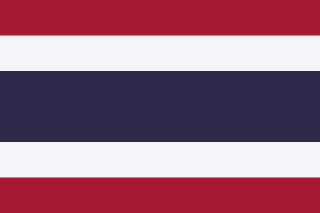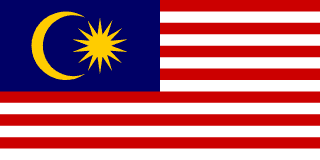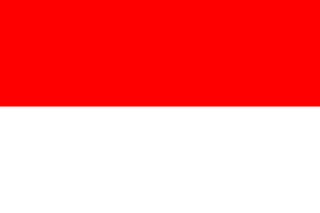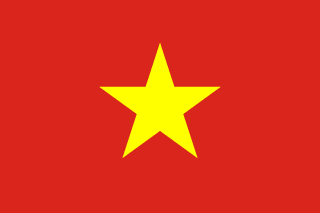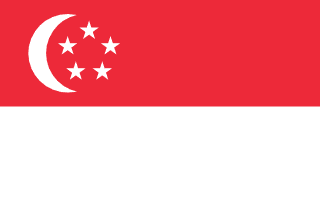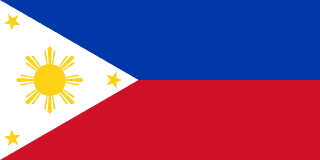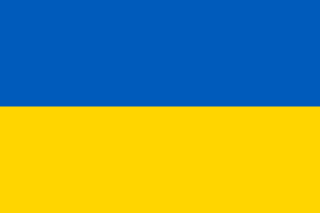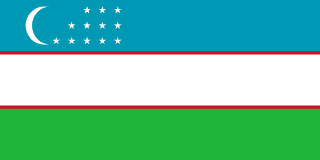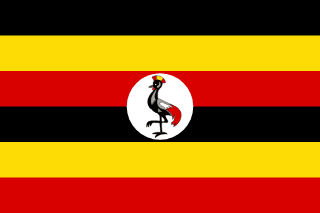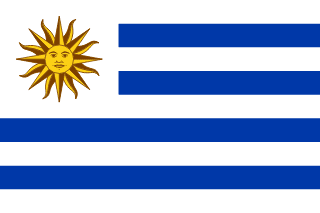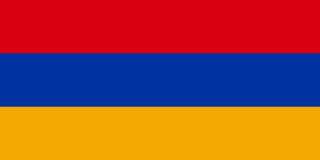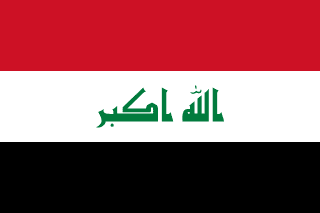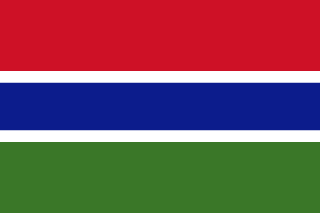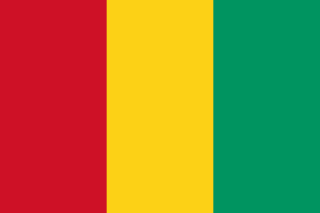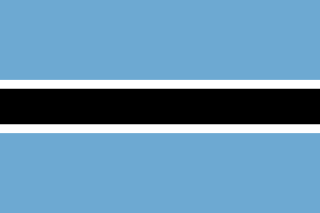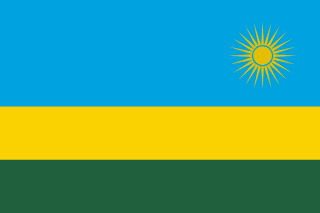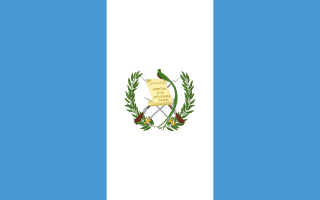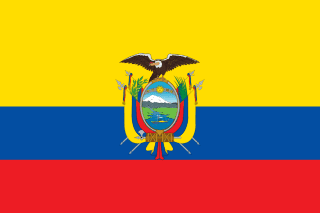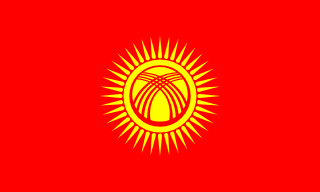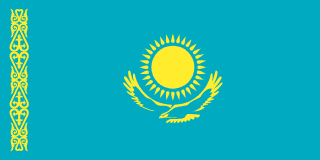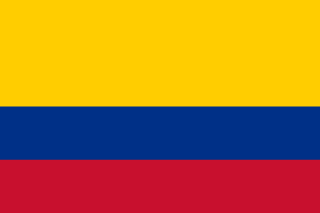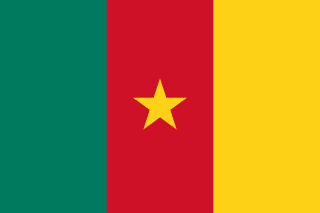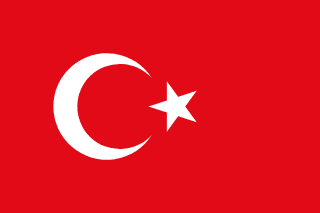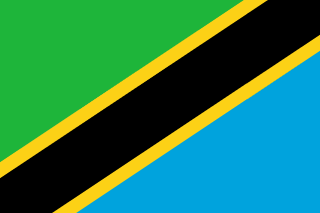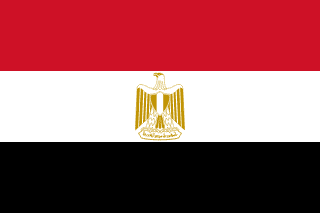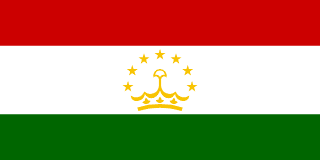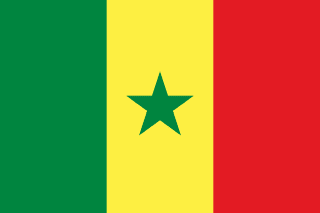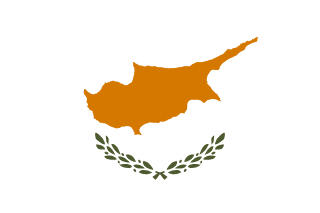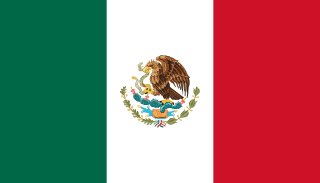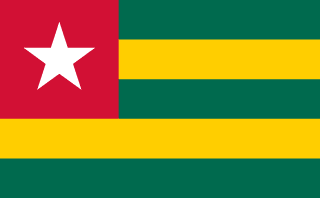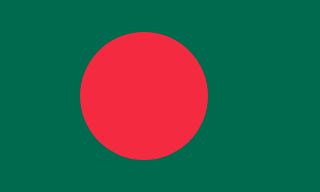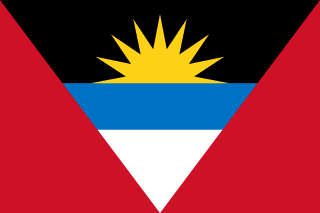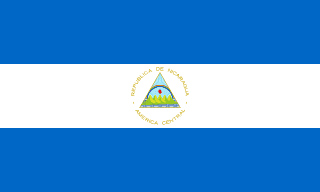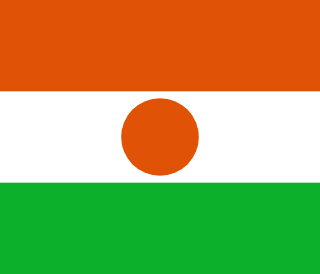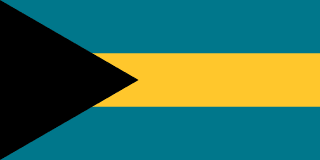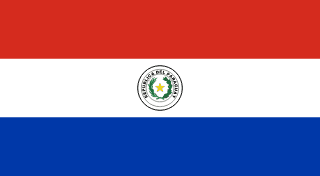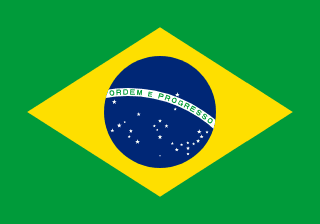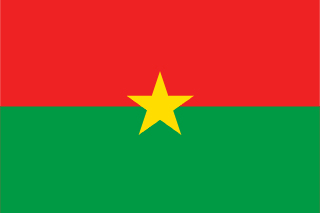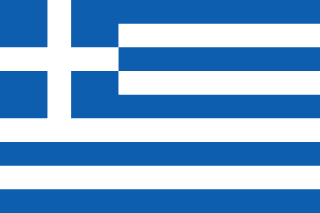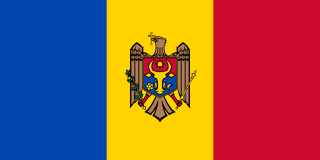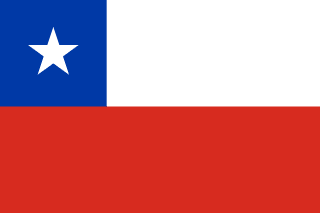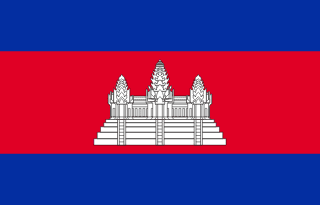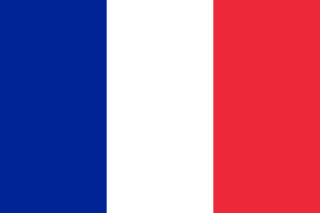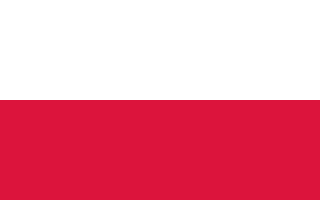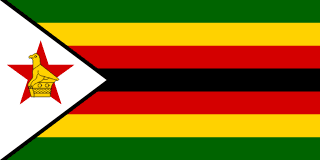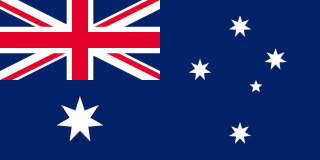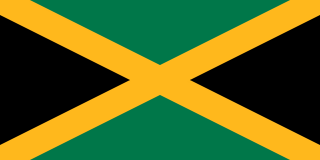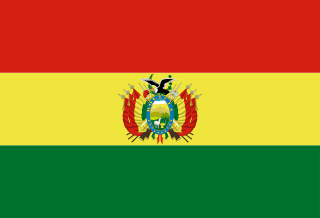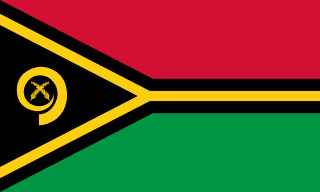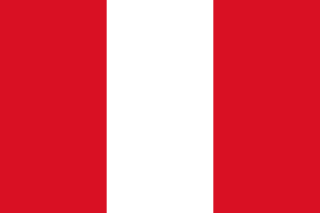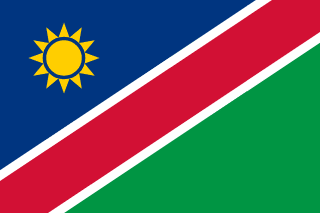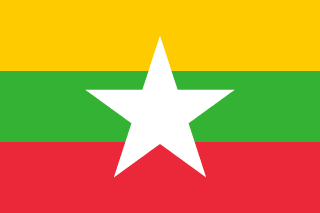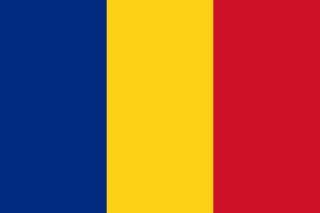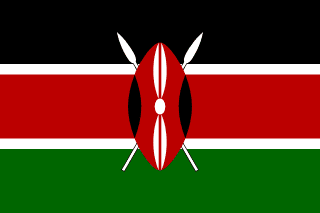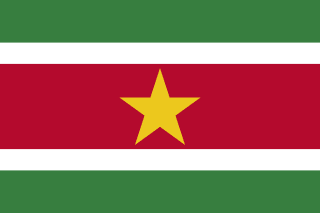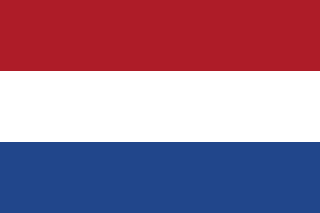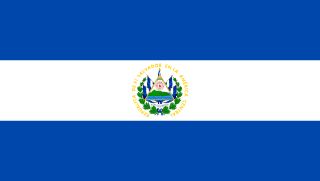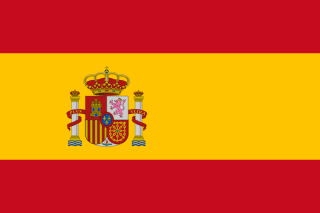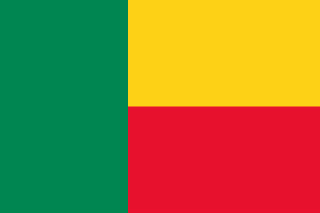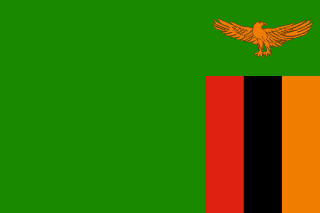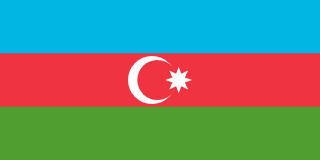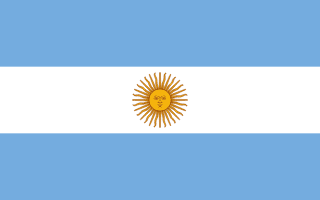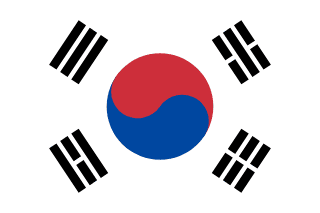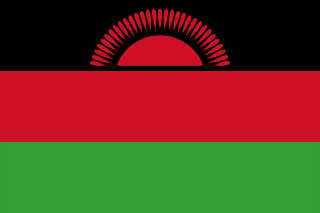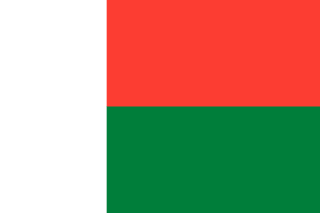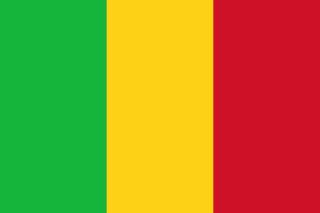糖尿病(diabetes mellitus,缩写为DM,简称diabetes)是一种由胰岛素绝对或相对分泌不足以及利用障碍引发的,以高血糖为标志的慢性疾病。该病主要分为1型、2型和妊娠糖尿病三种类型。病因主要归结为遗传因素和环境因素的共同作用,包括胰岛细胞功能障碍导致的胰岛素分泌下降,或者机体对胰岛素作用不敏感或两者兼备,使得血液中的葡萄糖不能有效被利用和储存。其临床特征是患者的血糖长期高于标准值。高血糖会造成俗称“三多一少”的症状,即:多食、多饮、多尿及体重下降。
Diabetes mellitus (abbreviated as diabetes) is a chronic disease caused by absolute or relative shortage and utilization of insulin and marked by high blood sugar level . The disease is mainly divided into type 1, type 2 and gestational diabetes. The reason is mainly attributed to the combined effect of genetic factors and environmental factors, including insulin island cell dysfunction leading to insulin deficiency , or insensitivity to insulin action or both, so that insulin in the blood cannot be effectively utilized and stored. Clinical hyperglycemia will cause symptoms commonly known as “three more and one less”, namely: polyphagia, polydipsia, polyuria and weight loss.
据估计,英格兰有380万名16岁及以上的人患有糖尿病(已确诊和未确诊)。这相当于该年龄段人口的8.6%。男性糖尿病患病率高于女性,分别为9.6%和7.6%。
It is estimated that 3.8 million people aged 16 years and over in England have diabetes(diagnosed and undiagnosed). This is equal to 8.6% of the population of this age group. Diabetes prevalence is higher in men than in women, 9.6% versus 7.6%.
历史
西医的糖尿病最早记载于西元前一千五百年的古埃及,直到西元二世纪,由希腊医师阿莱泰乌斯(Aretaeus of Cappadocia)命名为“diabetes”,意思是“筛”,因为病人一直口渴与排尿,人体好似筛子。中医在东汉张仲景《金匮要略》中也记载了“男子消渴,小便反多,饮一斗小便一斗,肾气丸主之”类似糖尿病的症状和治疗方法。
在中世纪以后,世界各地出现了多种不同的治疗糖尿病的方法,但直到1900年左右糖尿病的发病机理才被科学实验所证实。1889年,德国科学家约瑟夫·冯·梅林(Joseph von Mering)和俄裔德国科学家奥斯卡·明科夫斯基发现摘除了胰腺的狗出现了糖尿病所有的症状并在不久后死亡。
History
Diabetes in Western medicine was first recorded in ancient Egypt in 1,500 BC. It was not until the 2nd century AD that the Greek physician Aretaeus of Cappadocia named it “diabetes”, meaning “sieve”, because the patient had been thirst and urination, the human body is like a sieve. Traditional Chinese medicine also recorded symptoms and treatment methods similar to diabetes in Zhang Zhongjing’s “Synopsis of the Golden Chamber” in the Eastern Han Dynasty: “Men are thirsty and urinate profusely. They drink one bucket and urinate one bucket, and Shenqi Pills control it.” The symptoms described are similar to diabetes.
After the Middle Ages, many different methods of treating diabetes appeared around the world, but it was not until around 1900 that the pathogenesis of diabetes was confirmed by scientific experiments. In 1889, German scientists Joseph von Mering and Russian-German scientist Oscar Minkovsky discovered that dogs whose pancreas had been removed developed all the symptoms of diabetes and died soon after. 1910年,爱德华·阿尔伯特·沙比-谢弗爵士提出:患有糖尿病的病人是因为缺少一种胰腺制造的物质,他建议称这种物质为“insulin”(源自拉丁文“insula”,原意为小岛,中文译为“胰岛素”)。直到1921年,胰脏在新陈代谢中的内分泌作用以及胰岛素是否真的存在才被进一步的研究所证实。1921年,弗雷德里克·格兰特·班廷爵士和查尔斯·赫伯特·贝斯特重复了梅林和明科夫斯基的实验,他们进一步证明,可以通过注射健康狗的胰岛提取物使患了糖尿病的狗恢复过来。班廷、贝斯特以及他们的同事,特别是化学家科利普(Collip)在多伦多大学继续从事提纯牛胰岛素的工作。
In 1910, Sir Edward Albert Shabby-Shafer proposed that patients with diabetes suffer from a lack of a substance produced by the pancreas. He suggested calling this substance “insulin” (from the Latin “insula”). , originally meaning small island, translated into Chinese as “Yi Dao Su”). It was not until 1921 that further research confirmed the endocrine role of the pancreas in metabolism and whether insulin actually existed. Merlin and Minkowski’s experiments were repeated in 1921 by Sir Frederick Grant Banting and Charles Herbert Best, who further demonstrated that healthy dogs could be treated with pancreatic islet extracts by injection. Diabetic dogs recover. Banting, Best, and their colleagues, especially chemist Collip, continued work on purifying bovine insulin at the University of Toronto.
直到1922年,第一位糖尿病患者得到了一种有效的治疗——胰岛素注射疗法。班廷和实验室主任约翰·麦克劳德因此获得了1923年的诺贝尔生理学和医学奖。1936年1月哈罗德·珀西瓦尔·希姆斯沃斯爵士发表论文指出了1型糖尿病和2型糖尿病的区别。1942年,发明磺酰脲类药物(作用于胰岛的β细胞以增加胰岛素的分泌。1955年,化学家弗雷德里克·桑格爵士(Sir Frederick Sanger)确定了胰岛素中氨基酸的排列次序,他也因此而获得1958年诺贝尔化学奖。
It was not until 1922 that the first diabetic patient received an effective treatment – insulin injection therapy. Banting and laboratory director John MacLeod won the 1923 Nobel Prize in Physiology or Medicine. In January 1936, Sir Harold Percival Himsworth published a paper pointing out the difference between type 1 diabetes and type 2 diabetes. In 1942, sulfonylurea drugs (which act on the beta cells of the pancreas to increase insulin secretion) were invented. In 1955, chemist Sir Frederick Sanger determined the sequence of amino acids in insulin. He also won the 1958 Nobel Prize in Chemistry.
病因
为了理解糖尿病发病原因,我们首先了解一下胰腺及其功能。
Cause
In order to understand the causes of diabetes, we first understand the pancreas and its functions.
胰脏(pancreas)也称胰腺,旧称膵、脺,脊椎动物具有外、内分泌功能的腺体:外分泌由腺泡、连通肠腔的导管组成,腺泡分泌多种消化酶,导管上皮细胞分泌碳酸氢盐、钠、钾、氯等离子和水,合称胰液。经导管进入十二指肠的胰液可消化糖、脂肪和蛋白质,是机体重要的消化液。胰腺的内分泌则是由胰岛所组成,胰岛分泌胰岛素、胰高血糖素、胰多肽和生长抑素等激素。胰岛素、胰高血糖素对维持血糖水平有十分重要的作用。
Pancreas, also knownis a gland of vertebrate animals with exocrine and endocrine functions: exocrine is composed of acini and ducts connected to the intestinal lumen. The acini secrete a variety of digestive enzymes, and the duct epithelial cells secrete carbonic acid. Hydrogen salts, sodium, potassium, chlorine ions and water are collectively called pancreatic juice. The pancreatic juice that enters the duodenum through the duct can digest sugar, fat and protein and is an important digestive juice in the body. The endocrine system of the pancreas is composed of pancreatic islets, which secrete hormones such as insulin, glucagon, pancreatic polypeptide, and somatostatin. Insulin and glucagon play a very important role in maintaining blood sugar levels.
胰岛/pancreatic islet
胰岛素的作用机制
胰腺将胰岛素释放到血流中。
胰岛素通过体循环将糖分送入细胞。胰岛素会降低血液中的糖分。
随着血糖水平下降,胰腺分泌的胰岛素也会减少。
葡萄糖的作用
葡萄糖是一种糖类,可以为肌肉和其他组织细胞提供能量。
葡萄糖有两大主要来源:食物和肝脏。
糖被吸收后进入血流,在胰岛素的帮助下进入细胞。
肝脏可以储存和生成葡萄糖。
如果您因一段时间未进食等原因导致葡萄糖水平低,肝脏会将储存的糖原分解为葡萄糖,使您的葡萄糖水平维持在正常范围。
Insulin’s mechanism of action
The pancreas releases insulin into the bloodstream.
Insulin delivers sugar into cells through the systemic circulation. Insulin lowers the amount of sugar in the blood.
As blood sugar levels drop, the pancreas secretes less insulin.
The role of glucose
Glucose is a type of sugar that provides energy to muscles and other tissue cells.
There are two main sources of glucose: food and liver.
After the sugar is absorbed, it enters the bloodstream and enters the cells with the help of insulin.
The liver stores and produces glucose.
If your glucose levels are low due to reasons such as not eating for a while, your liver will break down stored glycogen into glucose to keep your glucose levels within the normal range.
目前尚不清楚导致大多数类型糖尿病的确切原因。在所有情况下,糖分都会在血液中积聚。这是因为胰腺未产生足够的胰岛素。造成1型和2型糖尿病的原因可能包括多种基因因素或环境因素。但尚不清楚具体是哪些因素。
The exact causes of most types of diabetes are not yet known. In all cases, sugar accumulates in the blood. This is because the pancreas does not produce enough insulin. The causes of type 1 and type 2 diabetes may include a variety of genetic or environmental factors. But it’s not clear what those factors are.
风险因素
导致糖尿病的风险因素因糖尿病类型而定。所有类型都可能与家族病史有关。环境因素和地理因素可能增加患1型糖尿病的风险。
有时会检测1型糖尿病患者的家庭成员是否有糖尿病免疫系统细胞(自身抗体)。这些自身抗体的存在会增加患1型糖尿病的风险。但并不是每个存在这些自身抗体的人都会患上糖尿病。
种族或族裔可能增加您发展为2型糖尿病的风险。虽然原因尚不清楚,但某些人种的患病风险更高,包括黑人、拉丁裔、美洲印第安人和亚裔美国人。
糖尿病前期、2型糖尿病和妊娠期糖尿病更常见于超重或肥胖的人群。
Risk factors
Risk factors for developing diabetes vary depending on the type of diabetes. All types may be related to family history. Environmental and geographic factors may increase the risk of type 1 diabetes.
Family members of people with type 1 diabetes are sometimes tested for the presence of diabetic immune system cells (autoantibodies). The presence of these autoantibodies increases the risk of type 1 diabetes. But not everyone with these autoantibodies will develop diabetes.
Race or ethnicity may increase your risk of developing type 2 diabetes. While the cause is unclear, certain ethnic groups are at higher risk, including blacks, Latinos, American Indians and Asian Americans.
Prediabetes, type 2 diabetes, and gestational diabetes are more common in people who are overweight or obese.
症状
糖尿病的症状取决于血糖有多高。有些患者可能没有症状,尤其是糖尿病前期、妊娠期糖尿病或2型糖尿病患者。1型糖尿病的症状往往来得很快,也更为严重。
1型糖尿病或2型糖尿病的一些症状包括:
感觉比平时更口渴。
尿频。
体重意外下降。
尿液含酮。酮是肌肉和脂肪分解的副产物,会在胰岛素不足时产生。
感觉疲惫和虚弱。
感觉易怒或有其他情绪变化。
视力模糊。
伤口愈合缓慢。
多处感染,例如牙龈、皮肤和阴道感染。
Symptom
Symptoms of diabetes depend on how high your blood sugar is. Some people may be asymptomatic, especially those with prediabetes, gestational diabetes, or type 2 diabetes. Symptoms of type 1 diabetes tend to come on quickly and are more severe.
Some symptoms of type 1 diabetes or type 2 diabetes include:
Feeling thirstier than usual.
Frequent urination.
Unexpected weight loss.
Urine contains ketones. Ketones are byproducts of muscle and fat breakdown and are produced when insulin is insufficient.
Feeling tired and weak.
Feeling irritable or having other mood changes.
Blurred vision.
Wounds heal slowly.
Multiple infections such as gum, skin, and vaginal infections.
1型糖尿病可能在任何年龄开始出现,但通常始于儿童时期或青少年时期。
2型糖尿病更为常见,任何年龄都可能患上此病。2型糖尿病更多见于40岁以上的人群。但儿童2型糖尿病也越来越常见。
Type 1 diabetes can start at any age, but usually begins in childhood or adolescence.
Type 2 diabetes is more common and can occur at any age. Type 2 diabetes is more common in people over the age of 40. But type 2 diabetes is also increasingly common in children.
糖尿病分型
1. 1型糖尿病(Type 1 Diabetes)原因:自身免疫系統攻擊胰島β細胞,導致胰島素分泌不足或完全缺乏。
特點:
常發生於青少年或兒童,但也可能出現在成人。
患者需要終身依賴胰島素治療。
症狀:多尿、多飲、多食、體重減輕(“三多一少”)。
病因:基因易感性與環境觸發因素(如病毒感染)相關。
Types of diabetes
1. Cause of Type 1 Diabetes: The autoimmune system attacks pancreatic beta cells, resulting in insufficient or complete lack of insulin secretion.
Features:
It usually occurs in teenagers or children, but it can also occur in adults.
Patients require life-long dependence on insulin therapy.
Symptoms: polyuria, polydipsia, polyphagia, and weight loss (“three more and one less”).
Cause: Genetic susceptibility is linked to environmental triggers such as viral infections.
2. 2型糖尿病(Type 2 Diabetes)
原因:胰島素抵抗(身體對胰島素的反應降低)和胰島功能逐漸減退。
特點:
常與肥胖、不良生活方式和遺傳因素有關。
常見於中老年人,但由於肥胖兒童和青少年人群增多,發病年齡逐漸下降。
可通過飲食控制、運動、口服降糖藥或胰島素治療控制病情。
症狀:與1型相似,但症狀較輕,發病較緩慢。
相關因素:肥胖、高血壓、家族史、不良飲食習慣。
2. Type 2 Diabetes
Cause: Insulin resistance (reduced body response to insulin) and progressive loss of pancreatic islet function.
Features:
Often related to obesity, poor lifestyle and genetic factors.
It is common in middle-aged and elderly people, but due to the increase in obese children and adolescents, the age of onset is gradually decreasing.
The condition can be controlled through diet control, exercise, oral hypoglycemic drugs or insulin therapy.
Symptoms: Similar to type 1, but the symptoms are milder and the onset is slower.
Related factors: obesity, high blood pressure, family history, poor eating habits.
3. 妊娠期糖尿病(Gestational Diabetes Mellitus, GDM)
原因:妊娠期間由於激素變化導致胰島素作用受阻。
特點:
僅發生於妊娠期間,分娩後多數情況下可恢復正常。
但母親患妊娠糖尿病後,其未來發展為2型糖尿病的風險增加。
風險人群:超重、有糖尿病家族史、曾生育過巨大兒(體重大於4公斤)等。
3. Gestational Diabetes Mellitus (GDM)
Cause: Blockage of insulin action due to hormonal changes during pregnancy.
Features:
It only occurs during pregnancy and in most cases returns to normal after delivery.
But after a mother develops gestational diabetes, her risk of developing type 2 diabetes in the future increases.
Risk groups: overweight, those with a family history of diabetes, those who have given birth to macrosomia (weighing more than 4 kilograms), etc.
4. 其他特殊類型糖尿病
基因缺陷相關糖尿病:
如MODY(成熟型糖尿病青年發病型),由單基因突變引起。
胰腺疾病相關糖尿病:
如胰腺炎、胰腺腫瘤或手術後引起。
藥物或化學品誘發的糖尿病:
如長期使用糖皮質激素、免疫抑制劑等。
內分泌疾病相關糖尿病:
如庫欣綜合症、肢端肥大症等。
4. Other special types of diabetes
Diabetes related to genetic defects:
For example, MODY (mature-onset diabetes of the young) is caused by a single gene mutation.
Diabetes associated with pancreatic disease:
Such as pancreatitis, pancreatic tumors or caused after surgery.
Drug or chemical-induced diabetes:
Such as long-term use of glucocorticoids, immunosuppressants, etc.
Endocrine disease-related diabetes:
Such as Cushing’s syndrome, acromegaly, etc.
糖尿病前期(Pre-diabetes)
並非正式的糖尿病分型,但為糖尿病的高危階段。
特點:
血糖水平高於正常,但未達糖尿病診斷標準。
空腹血糖受損(IFG)和糖耐量異常(IGT)。
可通過生活方式改變(如飲食和運動)預防進展為2型糖尿病。
Pre-diabetes
Not an official classification of diabetes, but a high-risk stage of diabetes.
Features:
Blood sugar levels are higher than normal but not diagnostic of diabetes.
Impaired fasting glucose (IFG) and impaired glucose tolerance (IGT).
Progression to type 2 diabetes can be prevented through lifestyle changes such as diet and exercise.
并发症
糖尿病的长期并发症会逐渐发展。糖尿病病程越长、血糖控制越差,出现并发症的风险就越高。糖尿病并发症最终可能导致失能甚至危及生命。可能的并发症包括:
1.心脏和血管(心血管)疾病。糖尿病主要会增加多种心脏问题的风险,如伴有胸部疼痛的冠状动脉疾病(心绞痛)、心脏病发作、卒中和动脉狭窄(动脉粥样硬化)。如果您患有糖尿病,那么您发生心脏病或卒中的可能性也会增加。
Complication
Long-term complications of diabetes develop gradually. The longer you have diabetes and the poorer your blood sugar control, the higher your risk of complications. Diabetic complications can ultimately be disabling or even life-threatening. Possible complications include:
1. Heart and blood vessel (cardiovascular) disease. Diabetes primarily increases the risk of several heart problems, such as coronary artery disease (angina) with chest pain, heart attack, stroke, and narrowing of the arteries (atherosclerosis). If you have diabetes, you are also more likely to have a heart attack or stroke.
2.糖尿病引起的神经损伤(糖尿病性神经病变)。血糖过多会伤害滋养神经(尤其是腿部神经)的细小血管(毛细血管)壁。这会引起麻刺感、麻木感、灼热或疼痛,通常始于趾尖或指尖,并且会逐渐向上扩散。3.与消化有关的神经受损可能导致恶心、呕吐、腹泻或便秘,还可能引起男性勃起功能障碍。
4.糖尿病引起的肾脏损伤(糖尿病肾病)。肾脏中有数百万个微小的血管簇(肾小球),用于过滤血液中的废物。糖尿病会破坏这种精细的过滤系统。
2. Nerve damage caused by diabetes (diabetic neuropathy). Too much blood sugar can damage the walls of the small blood vessels (capillaries) that nourish nerves, especially those in the legs. This causes a tingling, numbness, burning, or pain that usually starts at the tips of the toes or fingers and gradually spreads upward. 3. Damage to nerves related to digestion may lead to nausea, vomiting, diarrhea or constipation, and may also cause erectile dysfunction in men.
4. Kidney damage caused by diabetes (diabetic nephropathy). The kidneys have millions of tiny clusters of blood vessels (glomeruli) that filter waste products from the blood. Diabetes can disrupt this delicate filtration system.
5.糖尿病引起的眼睛损伤(糖尿病性视网膜病变)。糖尿病可能会损害眼睛的血管。这可能会导致失明。
6.足部损伤。足部神经损伤或血流不足会增加许多足部并发症的风险。
7.皮肤和口腔疾病。糖尿病可能让人更容易出现皮肤问题,包括细菌和真菌感染。
8听力损害。听力问题在糖尿病患者中更为常见。
9.2型糖尿病可能增加失智症(如阿尔茨海默病)风险。
10.抑郁症状常见于1型和2型糖尿病患者中。
5. Eye damage caused by diabetes (diabetic retinopathy). Diabetes may damage blood vessels in the eyes. This can cause blindness.
6. Foot injuries. Nerve damage or insufficient blood flow to the feet increases the risk of many foot complications.
7. Skin and oral diseases. Diabetes may make people more susceptible to skin problems, including bacterial and fungal infections.
8.Hearing damage. Hearing problems are more common in people with diabetes.
9. Type 2 diabetes may increase the risk of dementia, such as Alzheimer’s disease.
10. Depressive symptoms are common in people with type 1 and type 2 diabetes.
11.妊娠期糖尿病的并发症
大多数患有妊娠期糖尿病的孕妇都能分娩出健康的宝宝。但是,未经治疗或血糖水平未得到控制,可能给您和胎儿带来一些问题。
妊娠期糖尿病可能引发围产儿并发症,包括:
胎儿过大。多余的葡萄糖可以通过胎盘,过多葡萄糖会诱发胎儿胰腺分泌过多的胰岛素。这可能导致胎儿长得太大。有可能难以分娩,有时需要剖腹产。
11. Complications of gestational diabetes
Most pregnant women with gestational diabetes give birth to healthy babies. However, untreated or uncontrolled blood sugar levels can cause problems for you and your baby.
Gestational diabetes may cause perinatal complications, including:
The fetus is too large. Excess glucose can pass through the placenta, and excess glucose can induce the fetal pancreas to secrete too much insulin. This can cause the fetus to grow too large. Labor may be difficult and sometimes a caesarean section is required.
低血糖。有时,妊娠期糖尿病孕妇的胎儿在出生后不久会出现低血糖(低血糖症)。这是因为他们自身分泌的胰岛素过量。
未来患 2 型糖尿病。妊娠期糖尿病孕妇分娩的婴儿未来患肥胖症和2型糖尿病的风险较高。
死亡。妊娠期糖尿病若不经治疗,可能导致胎儿在出生前或出生后不久死亡。
Hypoglycemia. Sometimes the fetus of a woman with gestational diabetes develops low blood sugar (hypoglycemia) soon after birth. This is because they produce too much of their own insulin.
Type 2 diabetes in the future. Babies born to women with gestational diabetes are at higher risk of developing obesity and type 2 diabetes later in life.
die. If gestational diabetes is not treated, it may cause the fetus to die before or soon after birth.
糖尿病诊断标准
世界卫生组织(WHO)建议
英国糖尿病协会支持世界卫生组织2006年发布的诊断标准:“糖尿病和中度高血糖的定义和诊断”。英国糖尿病协会还欢迎世界卫生组织2011年决定接受HbA1c检测用于诊断糖尿病:“使用糖化血红蛋白诊断糖尿病”。
有关糖尿病诊断标准的信息如下。如需更多信息以及术语和分类的解释,请参阅完整的世界卫生组织指南。
Diagnostic criteria for diabetes
World Health Organisation (WHO) recommendations
Diabetes UK supports the diagnostic criteria published by the WHO in 2006: “definition and diagnosis of diabetes mellitus and intermediate hyperglycaemia“. Diabetes UK also welcomes the 2011 decision by the WHO to accept the use of HbA1c testing in diagnosing diabetes: “use of glycated haemoglobin in the diagnosis of diabetes mellitus“.
Information on the diagnostic criteria for diabetes is below. For further information and an explanation of terms and classifications please refer to the full WHO guidelines.
诊断糖尿病的方法和标准
糖尿病症状(例如1型糖尿病的多尿、烦渴和不明原因的体重减轻)加上:
随机静脉血浆葡萄糖浓度≥ 11.1 mmol/l或
空腹血糖浓度≥7.0mmol/l(全血≥6.1mmol/l)或
在口服葡萄糖耐量试验(OGTT)中,服用75克无水葡萄糖后两小时两小时血浆葡萄糖浓度≥ 11.1 mmol/l。
在没有症状的情况下,诊断不应基于单一的葡萄糖测定,而需要确认血浆静脉测定。至少在另一天进行一次额外的血糖测试结果(其值在糖尿病范围内)是至关重要的,无论是空腹、随机样本还是葡萄糖负荷后两小时。如果空腹随机值不能诊断,则应使用两小时值。
Methods and criteria for diagnosing diabetes
Diabetes symptoms (e.g. polyuria, polydipsia and unexplained weight loss for Type 1) plus:
a random venous plasma glucose concentration ≥ 11.1 mmol/l or
a fasting plasma glucose concentration ≥ 7.0 mmol/l (whole blood ≥ 6.1 mmol/l) or
two hour plasma glucose concentration ≥11.1 mmol/l two hours after 75g anhydrous glucose in an oral glucose tolerance test (OGTT).
With no symptoms diagnosis should not be based on a single glucose determination but requires confirmatory plasma venous determination. At least one additional glucose test result on another day with a value in the diabetic range is essential, either fasting, from a random sample or from the two hour post glucose load. If the fasting random values are not diagnostic the two hour value should be used.
妊娠期糖尿病
妊娠期糖尿病的诊断标准不同。如果女性有以下任一情况,则应诊断妊娠糖尿病:
空腹血糖水平为5.6mmol/l或以上或
2小时血浆葡萄糖水平为7.8mmol/l或以上。
Gestational diabetes
The criteria for diagnosing gestational diabetes is different. Gestational diabetes should be diagnosed if the woman has either:
a fasting plasma glucose level of 5.6mmol/l or above or
a 2-hour plasma glucose level of 7.8mmol/l or above.
糖化血红蛋白(HbA1c)检测可诊断糖尿病
建议将48mmol/mol (6.5%)的HbA1c作为诊断糖尿病的分界点。低于48mmol/mol (6.5%)的值并不排除使用葡萄糖测试诊断的糖尿病。
不应使用指尖刺血HbA1c,除非该方法以及使用该方法的医疗保健人员和设施能够在国家质量保证计划中证明其与实验室中发现的质量保证结果相匹配。所有患者的手指点刺试验必须通过实验室静脉HbA1c进行确认。
Haemoglobin A1c (HbA1c) testing to diagnose diabetes
An HbA1c of 48mmol/mol (6.5%) is recommended as the cut off point for diagnosing diabetes. A value of less than 48mmol/mol (6.5%) does not exclude diabetes diagnosed using glucose tests.
Finger-prick HbA1c should not be used unless the methodology and the healthcare staff and facility using it can demonstrate within the national quality assurance scheme that they match the quality assurance results found in laboratories. Finger prick tests must be confirmed by laboratory venous HbA1c in all patients.
对于没有糖尿病症状的患者,应重复进行实验室静脉HbA1c检测。如果第二个样本<48mmol/mol (6.5%),则该人应被视为患有糖尿病的高风险,并且如果出现症状,应在6个月或更短时间内重复测试。
In patients without symptoms of diabetes the laboratory venous HbA1c should be repeated. If the second sample is <48mmol/mol (6.5%) the person should be treated as at high risk of diabetes and the test should be repeated in 6 months or sooner if symptoms develop.
HbA1c不适合诊断糖尿病的情况:
所有儿童和青少年
任何年龄疑似患有1型糖尿病的患者
有糖尿病症状不足2个月的患者
患有急性疾病的高危患者(例如需要住院的患者)
患有急性胰腺损伤(包括胰腺手术)的患者
怀孕期间
是否存在影响HbA1c及其测量值的遗传、血液学和疾病相关因素(有关影响HbA1c及其测量值的因素列表,请参阅世界卫生组织报告附件1)
Situations where HbA1c is not appropriate for diagnosis of diabetes:
ALL children and young people
patients of any age suspected of having Type 1 diabetes
patients with symptoms of diabetes for less than 2 months
patients at high risk who are acutely ill (e.g. those requiring hospital admission)
patients with acute pancreatic damage, including pancreatic surgery
in pregnancy
presence of genetic, haematologic and illness-related factors that influence HbA1c and its measurement (see annex 1 ofthe WHO reportfor a list of factors which influence HbA1c and its measurement)
HbA1c低于48 mmol/mol的患者(6.5%)
这些患者可能仍符合世界卫生组织诊断糖尿病的血糖标准
不建议常规使用此类血糖测试,但对有糖尿病症状或临床上糖尿病风险极高的患者使用世界卫生组织葡萄糖测试。
Patients whose HbA1c is under 48 mmol/mol (6.5%)
These patients may still fulfill WHO glucose criteria for the diagnosis of diabetes
The use of such glucose tests is not recommended routinely, but use WHO glucose testing in patients who have symptoms of diabetes or clinically are at very high risk of diabetes.
西医治疗
Western medicine treatment
总的治疗原则是通过改变生活方式(包括饮食控制、体育锻炼、减轻体重,不吸烟及避免二手烟)来预防及控制糖尿病,并配合药物治疗以达到控制血糖、延缓疾病进展或恶化、延长加药时间,预防并发症的目的。
口服降糖药物
口服降糖药物类型包括:
立即访问我们的英国话费充值页面,了解更多充值套餐,轻松为您在英国的朋友或客户充值!
osidase inhibitors: lower postprandial blood sugar by inhibiting the absorption of carbohydrates in the upper small intestine.6. Dipeptidyl peptidase-4 inhibitor (DPP-4 inhibitor): By inhibiting DPP-4, it reduces the inactivation of GLP-1 in the body, and it can increase the genetic polymorphism of Asian β-cells. GLP-1 levels in the body.7.SGLT2 inhibitors: sodium-glucose co-transporter 2: help patients directly excrete sugar from the body through urine, so be careful about urinary tract infections.
对于严重的第2型糖尿病且严重肥胖的患者,最近发展了一种胃绕道手术,可显著改善其血糖水平。
2015年,台湾中央研究院的3名研究员以花费13年和1000种植物作研究,然后在苦瓜中发现最有效的植物性类胰岛素苦瓜胜肽(Bitter Melon Extract Peptide),随后在临床实验上证实相关副作用与过去的常见口服降糖药物缓和很多。
For patients with severe type 2 diabetes who are severely obese, a gastric bypass surgery has been recently developed that can significantly improve their blood glucose levels.
In 2015, three researchers from Taiwan’s Academia Sinica spent 13 years and 1,000 kinds of plants conducting research, and then discovered the most effective plant-based insulin-like Bitter Melon Extract Peptide in bitter melon, which was subsequently confirmed in clinical trials. The related side effects are much less severe than those of common oral hypoglycemic drugs in the past.
胰岛素
根据来源和化学结构的不同,胰岛素可分为动物胰岛素、人胰岛素和胰岛素类似物。人胰岛素如诺和灵系列,胰岛素类似物如门冬胰岛素、门冬胰岛素30、地特胰岛素注射液。按作用时间的特点可分为:速效胰岛素类似物、短效胰岛素、中效胰岛素、长效胰岛素(包括长效胰岛素类似物)和预混胰岛素(预混胰岛素类似物),常见速效胰岛素类似物如门冬胰岛素,长效胰岛素类似物如地特胰岛素。临床试验证明,胰岛素类似物在模拟生理性胰岛素分泌和减少低血糖发生的危险性方面优于人胰岛素。
Insulin
According to the source and chemical structure, insulin can be divided into animal insulin, human insulin and insulin analogs. Human insulin such as Novolin series, insulin analogs such as insulin aspart, insulin aspart 30, and insulin detemir injection. According to the characteristics of action time, it can be divided into: rapid-acting insulin analogs, short-acting insulin, intermediate-acting insulin, long-acting insulin (including long-acting insulin analogs) and premixed insulin (premixed insulin analogs). Common rapid-acting insulin analogs such as insulin aspart, long-acting insulin analogues such as insulin detemir. Clinical trials have proven that insulin analogs are superior to human insulin in simulating physiological insulin secretion and reducing the risk of hypoglycemia.
饮食
Diet
1. Avoid obesity and maintain an ideal and appropriate weight. Because insulin resistance is the main cause of type 2 diabetes, and according to research, obesity is the main cause of insulin resistance, therefore obesity can be said to be the main risk factor for type 2 diabetes.
2. The fat in red meat has been shown to increase the risk of type 2 diabetes.
3. Meat cooking and processing will produce so-called non-enzymatic glycosylation and lipid oxidation end products, which can promote oxidation reactions, lead to the generation of insulin resistance, and accelerate the progression of diabetic complications.
4. According to research, vegetarians who consume large amounts of cereal fiber can improve blood sugar control, lower blood lipid concentrations, and reduce the risk of type 2 diabetes and cardiovascular disease.
预防
健康的生活方式有助于您预防糖尿病前期及其发展为2型糖尿病,即使您有糖尿病家族史。其中包括:
健康饮食
积极运动
减掉多余的体重
控制血压和胆固醇
不抽烟
Prevention
A healthy lifestyle can help you prevent prediabetes and its progression to type 2 diabetes, even if you have a family history of diabetes. These include:
healthy eating
active sports
lose excess weight
Control blood pressure and cholesterol
Don’t smoke
英国NICE更新2型糖尿病指南
基于近年来陆续揭晓的一系列循证医学研究新证据,英国健康与临床优化研究所(NICE)更新了2型糖尿病诊疗指南(TYPE 2 DIABETES:National clinical guideline for management in primary and secondary care)。2型糖尿病诊疗指南充分参照了该领域最新的研究结果,对2型糖尿病患者的治疗与监测做出了积极、稳妥、循证、务实的建议。2型糖尿病诊疗指南主要特点如下:
NICE updates guidance on type 2 diabetes
Based on a series of new evidence-based medical research evidence released in recent years, the National Clinical Guideline for Management in Primary and Secondary Care (TYPE 2 DIABETES: National clinical guideline for management in primary and secondary care) has been updated by the National Institute for Health and Clinical Excellence (NICE). The Guidelines for the Diagnosis and Treatment of Type 2 Diabetes fully refer to the latest research results in this field and make positive, prudent, evidence-based and pragmatic suggestions for the treatment and monitoring of patients with Type 2 Diabetes. The main features of the Type 2 Diabetes Diagnosis and Treatment Guidelines are as follows:
1、更加强调了糖尿病患者健康教育的重要意义。良好的血糖及其他相关危险因素(血压、血脂等)的控制有赖于糖尿病医生和糖尿病患者双方的紧密配合,大力加强患者健康教育有助于患者充分认识糖尿病的危害性,从而更好的配合医生积极治疗。
2、更加强调了糖尿病非药物治疗与治疗性生活方式干预的重要意义。合理的饮食与体重控制与运动等不仅具有直接降低血糖的作用,还有助于改善降糖药物治疗的疗效。因此在整个治疗过程中应为患者做出合理的改善生活方式的建议。
1. More emphasis is placed on the importance of health education for patients with diabetes. Good control of blood sugar and other related risk factors (blood pressure, blood lipids, etc.) depends on the close cooperation between diabetic doctors and diabetic patients. Vigorously strengthening patient health education will help patients fully understand the dangers of diabetes and better cooperate with doctors. Treat aggressively.
2. More emphasis is placed on the importance of non-drug treatment and therapeutic lifestyle intervention for diabetes. Reasonable diet, weight control, and exercise not only directly lower blood sugar, but also help improve the efficacy of antidiabetic drug treatment. Therefore, patients should be given reasonable
立即访问我们的印尼话费充值页面,了解更多充值套餐,轻松为您在印尼的朋友或客户充值!
suggestions to improve their lifestyle during the entire treatment process.
3、将自我监测血糖视为降糖疗效监测的重要手段之一。患者自我监测血糖可以为医生提供更为全面的血糖信息,对于降糖治疗方案的制定与调整具有重要价值。
3. Consider self-monitoring of blood sugar as one of the important means of monitoring blood sugar-lowering efficacy. Patients’ self-monitoring of blood sugar can provide doctors with more comprehensive blood sugar information, which is of great value in the formulation and adjustment of antidiabetic treatment plans.
4、血糖控制:将糖化血红蛋白(HbA1c)作为监测降糖治疗效果的主要指标。在制定降糖治疗目标值时应充分考虑患者的具体情况及其个人意愿,对于一般糖尿病患者建议HbA1c目标值不低于6.5%。鼓励患者通过合理的治疗使其血糖达到并维持上述目标值,除非患者出现明显不良反应(包括低血糖)或为血糖达标而影响其生活质量。不应为追求HbA1c<6.5%的目标值而采取过于激进的降糖治疗策略。若HbA1c未达标但餐前血糖控制满意(< 7.0 mmol/L),应监测其餐后血糖。如餐后血糖超过8.5 mmol/L应给予相应处理。
4. Blood sugar control: Use glycated hemoglobin (HbA1c) as the main indicator to monitor the effect of hypoglycemic treatment. The patient’s specific situation and personal wishes should be fully considered when formulating the target value for hypoglycemic treatment. Fo
立即访问我们的乌干达话费充值页面,了解更多充值套餐,轻松为您在乌干达的朋友或客户充值!
r general patients with diabetes, it is recommended that the HbA1c target value be no less than 6.5%. Patients are encouraged to achieve and maintain the above-mentioned target values for their blood sugar through reasonable treatment, unless the patient experiences obvious adverse reactions (including hypoglycemia) or the quality of life is affected by the failure of the patient to reach the blood sugar target. Overly aggressive antidiabetic treatment strategies should not be adopted in order to pursue the target value of HbA1c <6.5%. If HbA1c does not reach the target but pre-meal blood sugar control is satisfactory (< 7.0 mmol/L), post-meal blood sugar should be monitored. If postprandial blood sugar exceeds 8.5 mmol/L, appropriate treatment should be given.
由于ACCORD降糖支试验的最终结果尚未完全公布,本指南并未引用其结果。迄今为止,尚无证据表明过于激进的降糖策略可以降低患者大血管病变的危险性。实际上,降糖治疗是一把双刃剑,适度的血糖控制可使患者获益,但追求过低的血糖目标可能会给患者带来危害,对于并存严重心血管疾病的患者尤为如此。由于过于严格的血糖控制将显著增加低血糖的危险性,而对于心血管病患者而言,低血糖的危害性可能远超过高血糖,甚至会诱发严重心血管事件。因此本指南所建议的降糖目标值积极而又稳妥。
Because the final results of the ACCORD glucose-lowering trial have not yet been fully released, their results are not cited in this guideline. To date, there is no evidence that overly aggressive glucose-lowering strategies can reduce the risk of macrovascular disease in patients. In fact, hypoglycemic treatment is a double-edged sword. Patients can benefit from moderate glycemic control, but pursuing too low a glycemic target may cause harm to patients, especially for patients with severe cardiovascular disease. Because too strict blood sugar control will significantly increase the risk of hypoglycemia, and for patients with cardiovascular disease, hypoglycemia may be far more harmful than hyperglycemia, and may even induce serious cardiovascular events. Therefore, the glucose-lowering target values recommended in this guideline are both positive and stable.
5、血压控制:由于糖尿病被视为冠心病的等危症,因此国内外一些高血压防治指南中建议将合并糖尿病的高血压患者的降压治疗目标值确定为130/80mmHg以下。但在本指南中,对于一般糖尿病患者仍继续沿用了140/90mmHg的目标值,仅在合并糖尿病肾病、眼病与脑血管疾病时建议将血压控制在130/80mmHg以下。
5. Blood pressure control: Since diabetes is considered an equal risk condition for coronary heart disease, some domestic and foreign guidelines for the prevention and treatment of hypertension recommend that the target value of antihypertensive treatment for hypertensive patients with diabetes should be below 130/80mmHg. However, in this guideline, the target value of 140/90mmHg continues to be used for general diabetic patients. It is only recommended to control blood pressure below 130/80mmHg when diabetic nephropathy, eye disease and cerebrovascular disease are combined.
6、调脂治疗:在调脂治疗方面,本指南进一步强调了糖尿病患者积极控制血脂水平的重要性以及他汀类药物的核心地位,并将低密度脂蛋白胆固醇的目标值确定为2.0 mmol/L以下。
NICE糖尿病指南的更新,在一定程度上反映了糖尿病治疗观念的某些变化。众所周知,糖尿病大血管与微血管并发症是糖尿病患者致死致残的主要原因,因此其治疗亦应以降低患者血管性并发症的危险性为主线。换言之,降糖治疗只是一种手段而非最终目的,其最终目的在于降低其致死致残率,改善患者生活质量乃至预后。相信这部指南的更新将对我国的临床实践起到积极影响。
6. Lipid-lowering treatment: In terms of lipid-lowering treatment, this guideline further emphasizes the importance of active control of blood lipid levels in patients with diabetes and the core position of statins, and sets the target value of low-density lipoprotein cholesterol as 2.0 mmol/L. the following.
The update of NICE diabetes guidelines reflects certain changes in diabetes treatment concepts to a certain extent. It is well known that macrovascular and microvascular complications of diabetes are the main causes of death and disability in patients with diabetes. Therefore, treatment should also focus on reducing the risk of vascular complications in patients. In other words, hypoglycemic treatment is only a means rather than the ultimate goal. Its ultimate goal is to reduce the death and disability rate and improve the patient’s quality of life and even prognosis. It is believed that the update of this guideline will have a positive impact on clinical practice in my country.
中医
糖尿病属于中医学的“消渴”范围。此外,西医的尿崩症,因具有多尿、烦渴的临床特点,也与消渴病有某些相似之处。消渴之名,首见于《素问/奇病论》,根据病机及症状的不同,《内经》还有消瘅、膈消、肺消、消中等名称的记载。
《内经》认为五脏虚弱,过食肥甘,情志失调是引起消渴的原因,而内热是其主要病机。《金匮要略》立专篇讨论,并最早提出治疗方药。
Traditional Chinese Medicine
Diabetes belongs to the scope of “xiao me/quenching thirst” in traditional Chinese medicine. In addition, diabetes insipidus in Western medicine has some similarities with diabetes insipidus due to its clinical characteristics of polyuria and polydipsia. The name of Xiaoke was first seen in “Suwen/Qiyi Lun”. According to the different pathogenesis and symptoms, the “Nei Jing” also records the names of Xiaohe, Gexiao, Feixiao and Xiao.
“Nei Jing” believes that weakness of the five internal organs, overeating fat and sweet foods, and emotional disorders are the causes of thirst, and internal heat is the main pathogenesis. “Synopsis of the Golden Chamber” has a special chapter for discussion, and is the first to propose treatment prescriptions.
《诸病源候论·消渴候》论述其并发症说:“其病变多发痈疽。”《外台秘要,消中消暑肾消》引《古今录验》说:“渴而饮水多,小便数,……甜者,皆是消渴病也。”又说:“每发即小便至甜”;“焦枯消瘦”,对消渴的临床特点作了明确的论述。
Treatise on the Causes and Symptoms of Diseases: Xiaoke Syndrome” discusses its complications: “The lesions are often carbuncle.” “Waitai Mi Yao, Xiaozhong Xiaoshu Shenxiao” quotes “Ancient and Modern Records” and says: “Drinking a lot of water when thirsty will cause frequent urination. ,…Those who are sweet are all xiao ke/diabetes mellitus. “It is also said that “the urine becomes sweet every time”; “scorched and emaciated”, which clearly discusses the clinical characteristics of diabetes.
刘河间对其并发症作了进一步论述,《宣明论方·消渴总论》说:消渴一证“可变为雀目或内障”。《儒门事亲·三消论》说:“夫消渴者,多变聋盲、疮癣、痤疠之类”,“或蒸热虚汗,肺痿劳嗽”。《证治准绳·消瘅》在前人论述的基础上,对三消的临床分类作了规范,“渴而多饮为上消(经谓膈消),消谷善饥为中消(经谓消中),渴而便数有膏为下消(经谓肾消)”。明清及其之后,对消渴的治疗原则及方药,有了更为广泛深入的研究。
Liu Hejian further discussed its complications. “Xuanming Lunfang·General Theory of Diabetes” said: Diabetes syndrome “can turn into night blindness or cataract”. “Confucianism Shiqin·3 xiao Lun” said : “Those who suffer from xiao ke may cause deafness, blindness, sores, ringworm, acne and the like”, “or sweating due to steaming heat, lung weakness and fatigue”. “Principles of Syndrome and Treatment for Xiao ke ” standardizes the clinical classification of the three xiao ke based on previous discussions. “Drinking too much but still thirsty is termed as “upper xiao “ , and strong appetite andeasy hunger are called “middle xiao “ . If you are thirsty and have frequent urine with ointment, it is called “lower xiao “.During the Ming and Qing Dynasties and thereafter, there was more extensive and in-depth research on the treatment principles and prescriptions for diabetes.
病因病机
1.禀赋不足。早在春秋战国时代,即已认识到先天禀赋不足,是引起消渴病的重要内在因素。《灵枢·五变》说:“五脏皆柔弱者,善病消瘅”,其中尤以阴虚体质最易罹患。
2.饮食失节长期过食肥甘,醇酒厚味,辛辣香燥,损伤脾胃,致脾胃运化失职,积热内蕴,化燥伤津,消谷耗液,发为消渴。《素问·奇病论》说:“此肥美之所发也,此人必数食甘美而多肥也,肥者令人内热,甘者令人中满,故其气上溢,转为消渴。”
Cause and pathogenesis
1.Born with a weak constitution .As early as the Spring and Autumn Period and the Warring States Period, it has been recognized that insufficient innate endowment is an important internal factor causing diabetes. “Lingshu·Five Changes” says: “Those whose five internal organs are all soft and weak will lead to the disease.” Among them, those with yin deficiency are the most susceptible.
2. Loss of diet and long-term overeating of fat, sweet wine, rich wine, spicy and dry food will damage the spleen and stomach, causing the spleen and stomach to fail to transport and metabolize, accumulating heat, drying and damaging body fluids, consuming grains and fluids, and causing thirst. “Suwen: Treatise on Strange Diseases” says: “The cause of this fatness is that the person must eat sweet and fat food. The fat food makes people feel hot inside, and the sweet food makes people feel full, so the Qi overflows and turns into xiao ke .”
3.情志失调长期过度的精神刺激,如郁怒伤肝,肝气郁结,或劳心竭虑,营谋强思等,以致郁久化火,火热内燔,消灼肺胃阴津而发为消渴。正如《临证指南医案·三消》说:“心境愁郁,内火自燃,乃消症大病。”
4.劳欲过度房室不节,劳欲过度,肾精亏损,虚火内生,则火因水竭益烈,水因火烈而益干,终致肾虚肺燥胃热俱现,发为消渴。如《外台秘要·消渴消中》说:“房劳过度,致令肾气虚耗,下焦生热,热则肾燥,肾燥则渴。”
3. Emotional disorders, long-term excessive mental stimulation, such as anger hurting the liver, stagnation of liver qi, or exhaustion of mind and thoughts, etc., causing long-term stagnation to turn into fire, internal fire burning, burning lungs and stomach yin and fluid, causing thirst. Just as the “Clinical Guide to Medical Records·3 xiao” says: “A depressed mood and spontaneous combustion of internal fire are serious reasons of xiao ke .”
4.Excessive desire for labor and lack of restraint in the chambers, excessive desire for labor, loss of kidney essence, and internal deficiency of fire will cause the fire to become stronger due to the depletion of water, and the water to increase the dryness due to the intensity of fire, eventually leading to kidney deficiency, lung dryness, stomach heat, and diarrhea. . For example, “Waitai Mi Yao·Xiaoke Xiaozhong” says: “Excessive sexual activity will cause kidney qi to be exhausted, and the lower jiao will generate heat. Heat will cause kidney dryness, and kidney dryness will cause thirst.”
消渴病的病机主要在于阴津亏损,燥热偏盛,而以阴虚为本,燥热为标,两者互为因果,阴愈虚则燥热愈盛,燥热愈盛则阴愈虚。消渴病变的脏腑主要在肺、胃、肾,尤以肾为关键。三脏之中,虽可有所偏重,但往往又互相影响。
肺主气为水之上源,敷布津液。肺受燥热所伤,则津液不能敷布而直趋下行。随小便排出体外,故小便频数量多;肺不布津则口渴多饮。正如《医学纲目·消瘅门》说:“盖肺藏气,肺无病则气能管摄津液之精微,而津液之精微者收养筋骨血脉,余者为溲。肺病则津液无气管摄,而精微者亦随溲下。”
The pathogenesis of diabetes mellitus mainly lies in the deficiency of yin and fluid, and the excess of dryness and heat. Yin deficiency is the basis and dryness and heat are the standard. The two are cause and effect of each other. The more yin is deficient, the more dryness and heat will be. The organs affected by diabetes are mainly the lungs, stomach, and kidneys, especially the kidneys in TCM . Among the three internal organs, although there may be some emphasis, they often influence each other.
The lung’s main qi is the source of water, which is used to compress body fluid. If the lungs are injured by dry heat, the body fluid cannot
立即访问我们的越南话费充值页面,了解更多充值套餐,轻松为您在越南的朋友或客户充值!
be compressed and will tend to flow downward. It is excreted from the body with urine, so urination is frequent and frequent; if the lungs are not filled with fluid, the patient will be thirsty and drink more. Just as “Compendium of Medicine·Xiaohemen” says: “The lungs store Qi. If the lungs are not diseased, the Qi can manage the fineness of the body fluids, and the fineness of the body fluids can absorb the muscles, bones and blood vessels, and the rest is phlegm. With lung disease, the body fluids cannot be absorbed by the trachea, and the body fluids cannot be absorbed by the trachea. The subtle ones will also follow.”
胃为水谷之海,主腐熟水谷,脾为后天之本,主运化,为胃行其津液。脾胃受燥热所伤,胃火炽盛,脾阴不足,则口渴多饮,多食善饥;脾气虚不能转输水谷精微,则水谷精微下流注入小便,故小便味甘;水谷精微不能濡养肌肉,故形体日渐消瘦。
肾为先天之本,主藏精而寓元阴元阳。肾阴亏虚则虚火内生,上燔心肺则烦渴多饮,中灼脾胃则胃热消谷,肾失濡养,开阖固摄失权,则水谷精微直趋下泄,随小便而排出体外,故尿多味甜。
The stomach is the sea of water and grains, responsible for the decomposition of water and grains. The spleen is the foundation of acquired diseases, responsible for transportation and transformation, and the movement of body fluids for the stomach. The spleen and stomach are injured by dryness and heat, and the stomach fire is strong and the spleen yin is insufficient, so people will be thirsty and drink more, and eating more food will relieve hunger; a weak spleen cannot transfer the water and grain essence, so the water and grain essence will flow down and be injected into the urine, so the urine tastes sweet; the water and grain essence cannot be nourished muscles, so the body becomes thinner and thinner.
The kidney is the foundation of the innate body, it stores the essence and contains the yin and yang. Deficiency of kidney yin will result in internal fire, excessive burning of the heart and lungs will lead to polydipsia and polydipsia, and burning of the spleen and stomach will cause stomach heat to eliminate grains. The kidneys will lose moisturizing and opening and closing to maintain the power, and the essence of water and grains will tend to leak down and be excreted with urine. Outside the body, the urine smells sweet.
消渴病虽有在肺、胃、肾的不同,但常常互相影响,如肺燥津伤,津液失于敷布,则脾胃不得濡养,肾精不得滋助;脾胃燥热偏盛,上可灼伤肺津,下可耗伤肾阴;肾阴不足则阴虚火旺,亦可上灼肺胃,终至肺燥胃热肾虚,故“三多”之证常可相互并见。
Although diabetes mellitus is different in the lungs, stomach, and kidneys, they often affect each other. For example, if the lungs are dry and the body fluid is injured, and the body fluid is lost in the compress, the spleen and stomach cannot be nourished, and the kidney essence cannot be nourished; the spleen and stomach are excessively dry and hot, and the upper body may be burned. Lung fluid can consume and damage kidney yin at the lower end; insufficient kidney yin means yin deficiency and strong fire, which can also burn the lungs and stomach at the upper end, and eventually lead to dryness of the lungs, stomach heat and kidney deficiency, so the syndromes of “three excesses” can often coexist with each other.
消渴病日久,则易发生以下两种病变:一是阴损及阳,阴阳俱虚。消渴虽以阴虚为本,燥热为标,但由于阴阳互根,阳生阴长,若病程日久,阴损及阳,则致阴阳俱虚。其中以肾阳虚及脾阳虚较为多见。二是病久人络,血脉瘀滞。消渴病是一种病及多个脏腑的疾病,影响气血的正常运行,且阴虚内热,耗伤津液,亦使血行不畅而致血脉瘀滞。血瘀是消渴病的重要病机之一,且消渴病多种并发症的发生也与血瘀密切有关。
If diabetes mellitus lasts for a long time, the following two pathological changes are likely to occur: First, yin is damaged and yang is damaged, and both yin and yang are deficient. Although yin deficiency is the root cause of diabetes, and dryness and heat are the symptoms, because yin and yang are mutually dependent, yang generates and yin grows. If the course of the disease lasts for a long time, yin is damaged and yang is damaged, resulting in both yin and yang being deficient. Among them, kidney-yang deficiency and spleen-yang deficiency are more common. The second is that the disease persists in the collaterals for a long time and causes blood stasis. Diabetes disease is a disease involving multiple organs. It affects the normal movement of qi and blood. It also causes yin deficiency and internal heat, which consumes body fluids and makes blood flow sluggish, leading to blood stasis. Blood stasis is one of the important pathogenesis of diabetes, and the occurrence of various complications of diabetes is also closely related to blood stasis.
临床表现
消渴病起病缓慢,病程漫长。本病以多尿、多饮、多食、倦怠乏力,形体消瘦,或尿有甜味为其证候特征。但患者“三多”症状的显著程度有较大的差别。消渴病的多尿,表现为排尿次数增多,尿量增加。有的患者是因夜尿增多而发现本病。与多尿同时出现的是多饮,喝水量及次数明显增多。多食易饥,食量超出常人,但患者常感疲乏无力,日久则形体消瘦。但现代的消渴病患者,有的则在较长时间内表现为形体肥胖。
Clinical manifestations
Diabetes has a slow onset and long course. The disease is characterized by polyuria, polydipsia, polyphagia, fatigue, weight loss, or sweet urine. However, the severity of the “three excesses” symptoms among patients varies greatly. Polyuria in diabetic disease is characterized by increased frequency of urination and increased urine output. Some patients discover this disease due to increased nocturia. Along with polyuria, polydipsia occurs, and the amount and frequency of drinking water increase significantly. Eating too much makes people hungry, and their food intake exceeds that of ordinary people. However, patients often feel tired and weak, and their bodies become thinner over time. However, today some patients with diabetes suffer from obesity for a long period of time.
诊断
1.凡以口渴多饮、多食易饥、尿频量多、形体消瘦或尿有甜味为临床特征者,即可诊断为消渴病。本病多发于中年以后,以及嗜食膏粱厚味、醇酒炙博之人。若有青少年期即罹患本病者,一般病情较重。
2.初起可“三多”症状不著,病久常并发眩晕、肺痨、胸痹心痛、中风、雀目、疮痈等。严重者可见烦渴、头痛、呕吐、腹痛、呼吸短促,甚或昏迷厥脱危象。由于本病的发生与禀赋不足有较为密切的关系,故消渴病的家族史可供诊断参考。
Diagnosis
1.Anyone with the clinical characteristics of thirsty and polydipsia, hunger after eating too much, frequent urination, weight loss, or sweet urine can be diagnosed as xiao ke /diabetes mellitus. This disease mostly occurs in people after middle age, as well as people who are addicted to eating thick and flavorful rice and rich alcohol. If someone suffers from this disease in adolescence, the condition is generally more severe.
2. The symptoms of “three excesses” may not be present at the beginning, but the disease is often complicated by dizziness, tuberculosis, chest pain, stroke, sparrows, sores and carbuncles, etc. In severe cases, polydipsia, headache, vomiting, abdominal pain, shortness of breath, and even coma may occur. Since the occurrence of this disease is closely related to insufficient endowment, the family history of diabetes can be used as a reference for diagnosis.
3.查空腹、餐后2小时血糖和尿糖,尿比重,葡萄糖耐量试验等,有助于确定诊断。必要时查尿酮体,血尿素氮,肌酐,二氧化碳结合力及血钾、钠、钙、氯化物等。
3. Checking fasting, 2-hour postprandial blood sugar and urine sugar, urine specific gravity, glucose tolerance test, etc. can help confirm the diagnosis. If necessary, check urinary ketone bodies, blood urea nitrogen, creatinine, carbon dioxide binding capacity, and blood potassium, sodium, calcium, chloride, etc.
鉴别诊断
1.口渴症口渴症是指口渴饮水的一个临床症状,可出现于多种疾病过程中,尤以外感热病为多见。但这类口渴各随其所患病证的不同而出现相应的临床症状,不伴多食、多尿、尿甜、瘦削等消渴的特点。
2.瘿病瘿病中气郁化火、阴虚火旺的类型,以情绪激动,多食易饥,形体日渐消瘦,心悸,眼突,颈部一侧或两侧肿大为特征。其中的多食易饥、消瘦,类似消渴病的中消,但眼球突出,颈前生长瘿肿则与消渴病有别,且无消渴病的多饮、多尿、尿甜等症。
Differential diagnosis
1.Thirst syndrome Thirst syndrome refers to a clinical symptom of thirst for water. It can appear in a variety of diseases, especially exogenous fever. However, this type of thirst has corresponding clinical symptoms depending on the disease, and is not accompanied by thirst-quenching characteristics such as polyphagia, polyuria, sweet urine, and weight loss.
2. Thyroid disease, such as hyperthyroidism : The type of thyroid disease in which qi stagnates and turns into fire, and yin deficiency and fire are strong, is characterized by emotional agitation, excessive eating and easy hunger, weight loss, palpitations, protruding eyes, and swelling on one or both sides of the neck. Among them, eating too much can lead to hunger and weight loss, which is similar to the symptoms of diabetes mellitus. However, exophthalmos and thyroid gland growing on the front of the neck are different from diabetes mellitus, and there are no polydipsia, polyuria, sweet urine and other symptoms of diabetes mellitus. .
辨证论治
1.上消
肺热津伤
症状:烦渴多饮,口干舌燥,尿频量多,舌边尖红,苔薄黄,脉洪数。
治法:清热润肺,生津止渴。
方药:消渴方。
Syndrome differentiation and treatment
1. Upper xiao ke
Lung heat and body fluid injury
Symptoms: restless and polydipsia, dry mouth and tongue, frequent urination, red tip of the tongue, thin yellow fur, and rapid and rapid pulse.
Treatment method: clear away heat and moisten the lungs, produce body fluids and quench thirst.
Prescription: Xiaoke prescription.
方中重用天花粉以生津清热,佐黄连清热降火,生地黄、藕汁等养阴增液,尚可酌加葛根、麦冬以加强生津止渴的作用。若烦渴不止,小便频数,而脉数乏力者,为肺热津亏,气阴两伤,可选用玉泉丸或二冬汤。玉泉丸中,以人参、黄芪、茯苓益气,天花粉、葛根、麦冬、乌梅、甘草等清热生津止渴。二冬汤中,重用人参益气生津,天冬、麦冬、天花粉、黄芩、知母清热生津止渴。二方同中有异,前者益气作用较强,而后者清热作用较强,可根据临床需要加以选用。
Trichosanthes root is used in the prescription to produce body fluids and clear away heat. Coptis chinensis is used to clear away heat and reduce fire. Rehmannia root and lotus root juice are used to nourish yin and increase fluids. Pueraria lobata and Ophiopogon japonicus can also be added to enhance the role of producing body fluids and quenching thirst. If polydipsia persists, urination is frequent, and pulse is weak, it is due to lung heat and body fluid deficiency, as well as Qi and Yin damage. Yuquan Pills or Erdong Decoction can be used. In Yuquan Pills, ginseng, astragalus, and poria are used to replenish qi, while trichosanthin, kudzu root, Ophiopogon japonicus, black plum, and licorice are used to clear away heat, promote body fluids, and quench thirst. In Erdong Decoction, ginseng is used to replenish qi and promote fluid production. Asparagus, Ophiopogon japonicus, Trichosanthes root , Scutellaria baicalensis and Anemarrhena are used to clear away heat, promote fluid production and quench thirst. The two prescriptions are similar but have differences. The former has a strong Qi-replenishing effect, while the latter has a strong heat-clearing effect. They can be selected according to clinical needs.
2.中消
胃热炽盛
症状:多食易饥,口渴,尿多,形体消瘦,大便干燥,苔黄,脉滑实有力。
治法:清胃泻火,养阴增液。;
方药:玉女煎。
方中以生石膏、知母清肺胃之热,生地黄、麦冬滋肺胃之阴,川牛膝活血化瘀,引热下行。可加黄连、栀子清热泻火。大便秘结不行,可用增液承气汤润燥通腑、“增水行舟”,待大便通后,再转上方治疗。本证亦可选用白虎加人参汤。方中以生石膏、知母清肺胃、除烦热,人参益气扶正,甘草、梗米益胃护津,共奏益气养胃、清热生津之效。
2. Middle xiao ke
Stomach heat
Symptoms: Eating too much but still hunger, thirst, excessive urination, weight loss, dry stool, yellow coating, and slippery and strong pulse.
Treatment method: clear the stomach and purge fire, nourish yin and increase fluid. ;
Recipe: Yunujian.
In the prescription, Gypsum and Anemarrhena clear away the heat in the lungs and stomach, Rehmannia root and Ophiopogon japonicus nourish the yin in the lungs and stomach, Achyranthes Sichuanensis activates blood circulation and removes blood stasis, and induces heat downwards. Coptis chinensis and gardenia can be added to clear away heat and relieve fire. If constipation is an issue, you can use Zengye Chengqi Decoction to moisturize the bowels and “increase water to row a boat”. After the stool is cleared, you can then turn to the above formula for treatment. For this syndrome, Baihu plus ginseng soup can also be used. The prescription uses Gypsum and Anemarrhena to clear the lungs and stomach and remove irritability and heat, ginseng replenishes Qi and strengthens the body, licorice and stem rice replenish the stomach and protect fluids, which together have the effects of replenishing Qi and nourishing the stomach, clearing away heat and promoting fluid production.
对于病程较久,以及过用寒凉而致脾胃气虚,表现口渴引饮,能食与便溏并见,或饮食减少,精神不振,四肢乏力,舌淡,苔白而于,脉弱者,治宜健脾益气、生津止渴,可用七味白术散。方中用四君子汤健脾益气,木香、藿香醒脾行气散津,葛根升清生津止渴。《医宗金鉴》等书将本方列为治消渴病的常用方之一。
For those with a long course of disease, or those with spleen and stomach qi deficiency caused by excessive use of cold herbs , with symptoms of thirst leading to drinking, inability to eat and loose stools, or reduced diet, lack of energy, weakness in the limbs, pale tongue, white coating, and weak pulse, Treatment should be to invigorate the spleen, replenish qi, produce fluid and quench thirst. Qiwei Atractylodes Powder can be used. In the prescription, among them Sijunzi Decoction is used to invigorate the spleen and replenish qi, woody fragrance and patchouli are used to wake up the spleen, promote qi and disperse fluid, and kudzu root is used to increase the clarity, promote fluid production and quench thirst. Books such as “Yizong Jinjian” list this prescription as one of the commonly used prescriptions for treating xiao ke / diabetes.
3.下消
肾阴亏虚
症状:尿频量多,混浊如脂膏,或尿甜,腰膝酸软,乏力,头晕耳鸣,口干唇燥,皮肤干燥、瘙痒,舌红苔,脉细数。
治法:滋阴补肾,润燥止渴。·
方药:六味地黄丸。
方中以熟地滋肾填精为主药;山萸肉固肾益精,山药滋补脾阴、固摄精微,该二药在治疗时用量可稍大;茯苓健脾渗湿,泽泻、丹皮清泄肝肾火热,共奏滋阴补肾,补而不腻之效。
3.Lower xiao ke
Kidney yin deficiency
Symptoms: Frequent urination, turbidity like grease, or sweet urine, soreness of waist and knees, fatigue, dizziness and tinnitus, dry mouth and lips, dry skin, itching, red tongue with coating, and thready pulse.
Treatment method: Nourishing yin andthe kidney, moistening dryness and quenching thirst. ·
Prescription: Liuwei Dihuang Pills.
In the prescription, Rehmannia root nourishes the kidney and replenishes essence as the main medicine; Cornus officinalis strengthens the kidney and replenishes essence, and yam nourishes spleen yin and fixes essence. The dosage of these two medicines can be slightly larger during treatment; Poria cocos strengthens the spleen and exudes dampness, and nourishes Alisma and Dandelion. The skin clears away the heat in the liver and kidneys, and together it nourishes yin and nourishes the kidneys, tonifying but not greasy.
阴虚火旺而烦躁,五心烦热,盗汗,失眠者,可加知母、黄柏滋阴泻火。尿量多而混浊者,加益智仁、桑螵蛸、五味子等益肾缩泉。气
立即访问我们的菲律宾话费充值页面,了解更多充值套餐,轻松为您在菲律宾的朋友或客户充值!
阴两虚而伴困倦,气短乏力,舌质淡红者,可加党参、黄芪、黄精补益正气。
For those with yin deficiency and strong fire, irritability, feeling hot in the palms of the hands, soles of the feet, and the pit of the heart ,night sweats, and insomnia, Anemarrhena and Phellodendron can be added to nourish yin and purge fire. For those with excessive urine output and turbidity, add Yi Zhiren, mulberry octopus, Schisandra chinensis, etc. to replenish the kidney and reduce the time of urination . For those with Qi and Yin deficiency accompanied by drowsiness, shortness of breath, fatigue, and light red tongue, Codonopsis pilosula, Astragalus root, and Polygonatum japonicus can be added to replenish healthy Qi.
阴阳两虚
症状:小便频数,混浊如膏,甚至饮一溲一,面容憔悴,耳轮干枯,腰膝酸软,四肢欠温,畏寒肢冷,阳痿或月经不调,舌苔淡白而干,脉沉细无力。
治法:温阳滋阴,补肾固摄。
方药:金匮肾气丸。
Deficiency of Yin and Yang
Symptoms: Frequent urination, turbidity like ointment, even drinking one gulp, haggard face, dry ear helix, soreness and weakness of waist and knees, lack of warmth in limbs, fear of cold, impotence or irregular menstruation, white and dry tongue coating, thin and weak pulse.
Treatment method: Warming yang and nourishing yin, nourishing the kidney and strengthening the body.
Prescription: Jingui Shenqi Pills.
方中以六味地黄丸滋阴补肾,并用附子、肉桂以温补肾阳。本方以温阳药和滋阴药并用,正如《景岳全书·新方八略》所说:“善补阳者,必于阴中求阳,则阳得阴助,而生化无穷;善补阴者,必于阳中求阴,则阴得阳长,而泉源不竭。”而《医贯·消渴论》更对本方在消渴病中的应用作了较详细的阐述:“盖因命门火衰,不能蒸腐水谷,水谷之气,不能熏蒸上润乎肺,如釜底无薪,锅盖干燥,故渴。
In the prescription, Liuwei Dihuang Pills are used to nourish yin and the kidneys, and aconite and cinnamon are used to warm and strengthen the kidney yang. This prescription uses both yang-warming medicine and yin-nourishing medicine. Just as “Jingyue Quanshu·Eight Strategies of New Prescriptions” says: “Those who are good at nourishing yang must seek yang from yin, then yang will be assisted by yin, and its biochemical processes will be endless; To replenish yin, one must seek yin from yang, then yin will grow and yang will grow, and the spring will “Inexhaustible.” “Yi Guan·Xiaoke Lun” further elaborates on the application of this prescription in the treatment of diabetes: “Because the Mingmen fire is weak, rotten water and grains cannot be steamed, and the qi of water and grains cannot be fumigated. Moistens the lungs, like the bottom of a cauldron without fuel and the lid of the pot dry, so thirsty
至于肺亦无所禀,不能四布水津,并行五经,其所饮之水,未经火化,直人膀胱,正谓饮一升溲一升,饮一斗溲一斗,试尝其味,甘而不咸可知矣。故用附子、肉桂之辛热,壮其少火,灶底加薪,枯笼蒸溽,稿禾得雨,生意维新。”
对消渴而症见阳虚畏寒的患者,可酌加鹿茸粉0.5g,以启动元阳,助全身阳气之气化。本证见阴阳气血俱虚者,则可选用鹿茸丸以温肾滋阴,补益气血。上述两方均可酌加覆盆子、桑螵蛸、金樱子等以补肾固摄。
As for the lungs, there is no endowment, and they cannot distribute water around and move through the five meridians. The water they drink, without being burned, goes straight into the bladder. It is said to drink one liter of hydration, one bucket of hydration, and taste the taste. It is sweet. You can tell that it is not salty. Therefore, the pungent heat of aconite and cinnamon can be used to strengthen the less fire, increase the fuel on the bottom of the stove, steam the dry basket, get rain from the draft grain, and revive the business. “
For patients with thirst, Yang deficiency and fear of cold, you can add 0.5g of deer antler powder to activate Yang and help the qi of Yang Qi throughout the body. If this syndrome shows deficiency of both yin and yang, qi and blood, you can take Luantong Pills to warm the kidneys, nourish yin, and replenish qi and blood. Both of the above two prescriptions can be supplemented with raspberries, mulberry seeds, golden cherry seeds, etc. to nourish the kidneys and stabilize the body.
消渴多伴有瘀血的病变,故对于上述各种证型,尤其是对于舌质紫暗,或有瘀点瘀斑,脉涩或结或代,及兼见其他瘀血证候者,均可酌加活血化瘀的方药。如丹参、川芎、郁金、红花、山楂等,或配用降糖活血方。方中用丹参、川芎、益母草活血化瘀,当归、赤白芍养血活血,木香行气导滞,葛根生津止渴。
Excessive thirst is accompanied by blood stasis, so it can be used for all the above syndromes, especially for those with dark purple tongue, petechiae, astringent or knotty pulse, and other blood stasis syndromes. Add prescriptions for promoting blood circulation and removing blood stasis. Such as salvia, Chuanxiong, turmeric, safflower, hawthorn, etc., or combined with antihyperglycemic and blood-activating prescriptions. The prescription uses Salvia miltiorrhiza, Ligusticum chuanxiong, and Motherwort to activate blood circulation and remove blood stasis; Angelica sinensis and red and white peony root nourish and activate blood circulation; Acostalis promotes Qi and stagnation; Pueraria lobata promotes fluid production and quenches thirst.
消渴容易发生多种并发症,应在治疗本病的同时,积极治疗并发症。白内障、雀盲、耳聋,主要病机为肝肾精血不足,不能上承耳目所致,宜滋补肝肾,益精补血,可用杞菊地黄丸或明目地黄丸。对于并发疮毒痈疽者,则治宜清热解毒,消散痈肿,用五味消毒饮。在痈疽的恢复阶段,则治疗上要重视托毒生肌。并发肺痨、水肿、中风者,则可参考有关章节辨证论治。
Diabetes is prone to multiple complications, and complications should be actively treated while treating the disease. The main pathogenesis of cataracts, night blindness, and deafness is insufficient essence and blood in the liver and kidneys, which cannot support the ears and eyes. It is advisable to nourish the liver and kidneys and replenish essence and blood. Qiju Dihuang pills or Mingmu Dihuang pills can be used. For those complicated by sores and carbuncles, the treatment should be to clear away heat and detoxify, dissipate carbuncles and swollen, and use Wuwei disinfectant drink. In the recovery stage of carbuncle, treatment should pay attention to toxin-stimulating and myogenic regeneration. For those complicated by tuberculosis, edema, and stroke, please refer to the relevant chapters for syndrome differentiation and treatment.
转归预后
消渴病常病及多个脏腑,病变影响广泛,未及时医治以及病情严重的患者,常可并发多种病证,如肺失滋养,日久可并发肺痨;肾阴亏损,肝失濡养,肝肾精血不能上承于耳目,则可并发白内障、雀目、耳聋;燥热内结,营阴被灼,脉络瘀阻,蕴毒成脓,则发为疮疖痈疽;阴虚燥热,炼液成痰,以及血脉瘀滞,痰瘀阻络,蒙蔽心窍,则发为中风偏瘫;阴损及阳,脾肾衰败,水湿潴留,泛滥肌肤,则发为水肿。综观消渴病的自然发病过程,常以阴虚燥热为始,病程日久,可导致阴损及阳,血行瘀滞,而形成阴阳两虚,或以阳虚为主,并伴血脉瘀阻的重证,且常出现各种严重的并发症。
Outcome and prognosis
Diabetes disease often affects multiple organs and has widespread effects. Patients who are not treated in time and whose condition is severe can often be complicated by multiple diseases. For example, if the lungs lose nourishment, it may be complicated by tuberculosis over time; if the kidney yin is insufficient, the liver loses nourishment. , the liver and kidney essence and blood cannot be carried up to the ears and eyes, it may be complicated by cataracts, night blindness,ear Deafness; internal knots due to dryness and heat, burning of yin, venous stasis, accumulation of toxins into pus, leading to sores, boils and carbuncles; deficiency of yin and heat, refining liquid into phlegm, blood stasis, phlegm blocking the collaterals, and blinding the heart orifices, then Hemiplegia due to stroke occurs; edema occurs when Yin isstagnated and Yang is damaged, spleen and kidneys fail, water and dampness are retained and flood the skin. Looking at the natural course of diabetes, it often begins with Yin deficiency and dryness and heat. As the disease progresses, it can lead to Yin damage and Yang, blood stasis, resulting in both Yin and Yang deficiency, or Yang deficiency as the main factor, accompanied by blood stasis. Severe symptoms often occur, and various serious complications often occur.
消渴病是现代社会中发病率甚高的一种疾病,尤以中老年发病较多。“三多”和消瘦的程度,是判断病情轻重的重要标志。早期发现、坚持长期治疗、生活规律、饮食控制的患者,其预后较好。儿童患本病者,大多病情较重。并发症是影响病情、损伤患者劳动力和危及患者生命的重要因素,故应十分注意及早防治各种并发症。
Diabetes is a disease with a high incidence rate in modern society, especially among middle-aged and elderly people. “Three excesses” and the degree of weight loss are important indicators for judging the severity of the disease. Patients who are diagnosed early and adhere to long-term treatment, regular life, and diet control have a better prognosis. Most children suffering from this disease are more seriously ill. Complications are important factors that affect the condition, damage the patient’s labor force, and endanger the patient’s life. Therefore, great attention should be paid to early prevention and treatment of various complications.
预防与调摄
本病除药物治疗外,注意生活调摄具有十分重要的意义。正如《儒门事亲,三消之说当从火断》说:“不减滋味,不戒嗜欲,不节喜怒,病已而复作。能从此三者,消渴亦不足忧矣。”其中,尤其是节制饮食,具有基础治疗的重要作用。在保证机体合理需要的情况下,应限制粮食、油脂的摄人,忌食糖类,饮食宜以适量米、麦、杂粮,配以蔬菜、豆类、瘦肉、鸡蛋等,定时定量进餐。戒烟酒、浓茶及咖啡等。保持情志平和,制订并实施有规律的生活起居制度。
Prevention and control
In addition to drug treatment of this disease, it is of great significance to pay attention to the adjustment of life. Just as “Confucianism is about getting married, the three eliminations should be cut off from fire”: “If the taste is not reduced, the cravings are not stopped, and the joy and anger are not restrained, the disease will return again. If you can eliminate these three, there is no need to worry about quenching thirst.” “Among them, diet control, in particular, plays an important role in basic treatment. Under the condition of ensuring the reasonable needs of the body, the intake of grains and fats should be limited, and sugar should be avoided. The diet should consist of appropriate amounts of rice, wheat, and grains, along with vegetables, beans, lean meats, eggs, etc., and regular and quantitative meals. Quit smoking, alcohol, strong tea and coffee, etc. Maintain peace of mind and formulate and implement a regular daily life system.
(作者简介:张恩勤教授,英国中医学院院长,英国皇家医学会和英国中医药学会资深会员)

